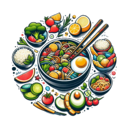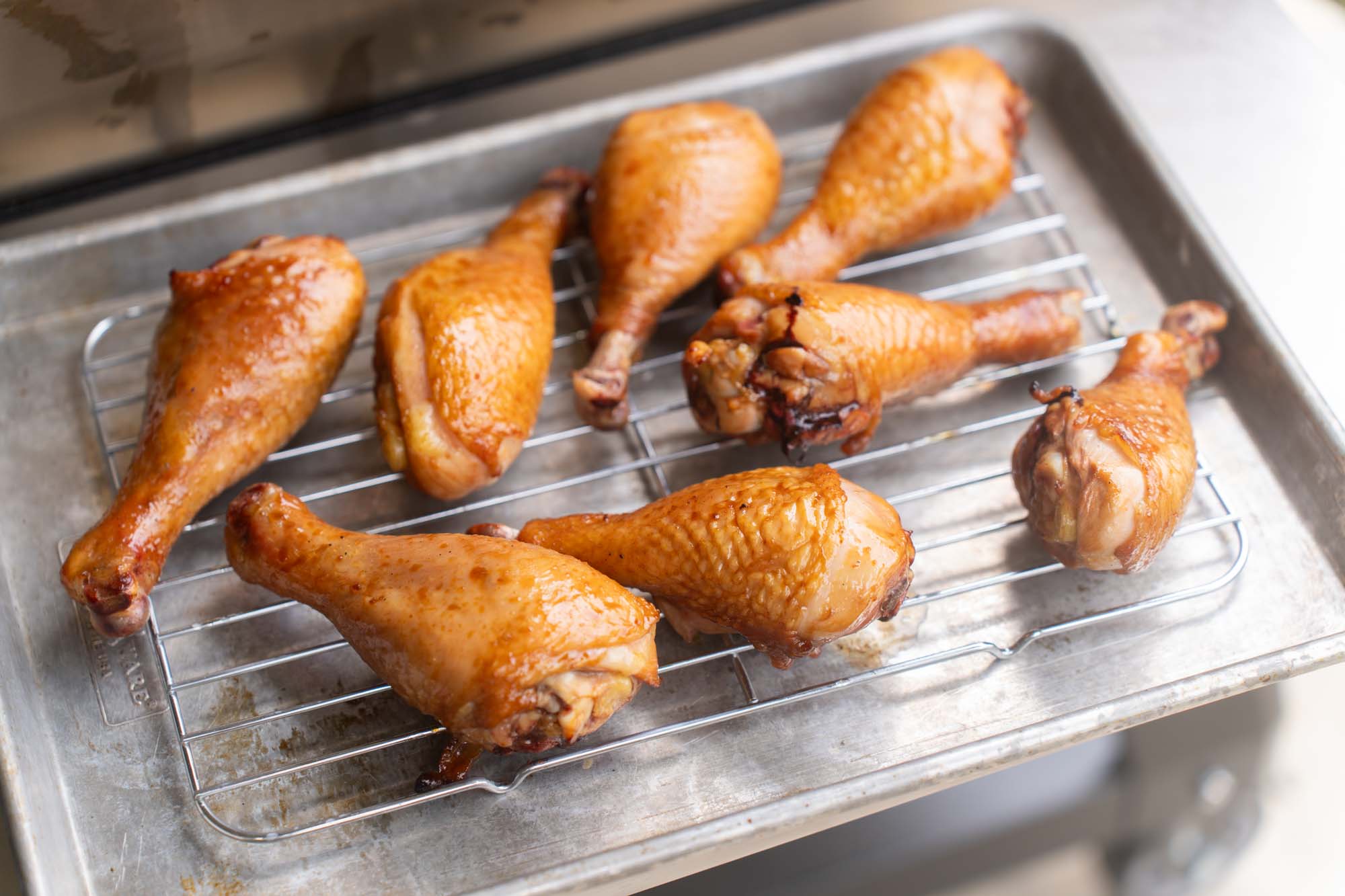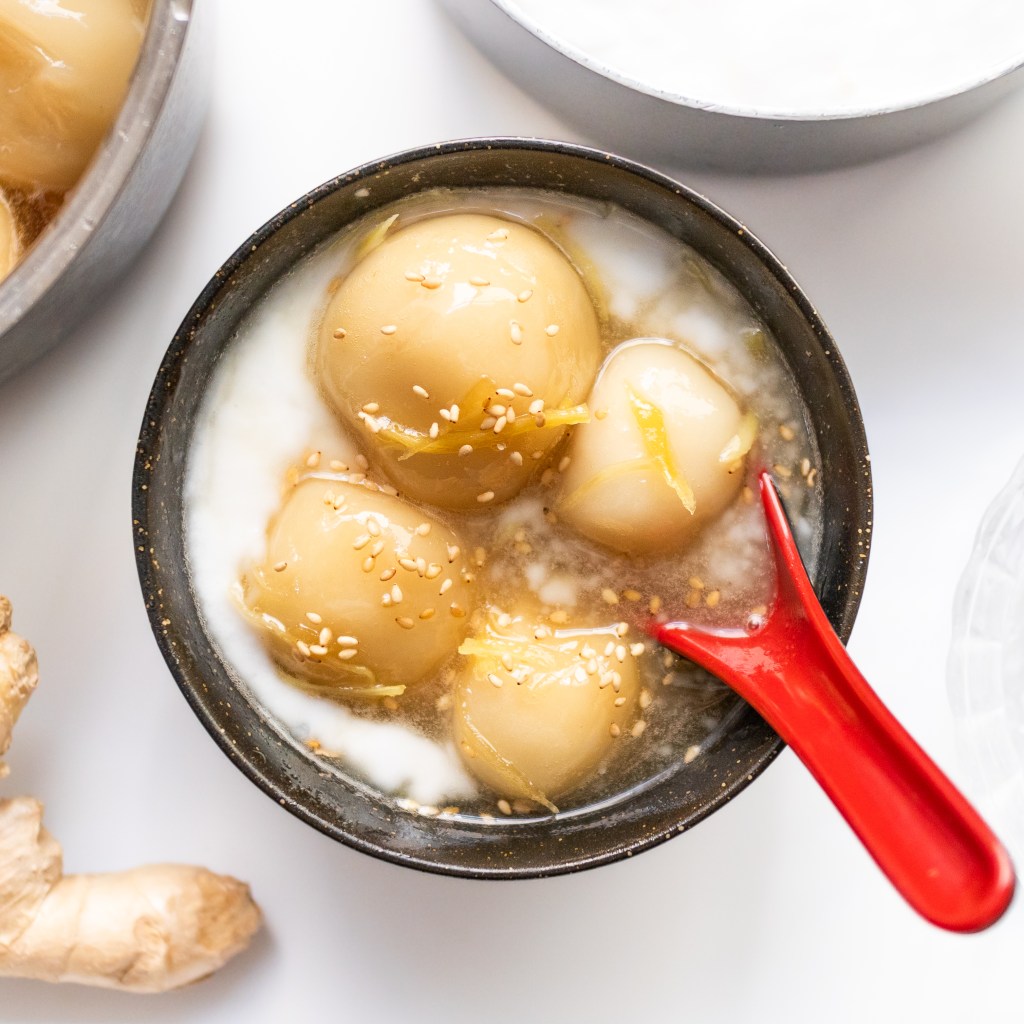Bánh khọt are delightful mini Vietnamese savory pancakes filled with tender pork and seasoned shrimp. Wrapped in layers of leafy greens, fragrant herbs, and tangy pickles, these pancakes are best enjoyed dipped in a sweet and flavorful fish sauce, creating the perfect flavor-packed bite.
What is bánh khọt?
Bánh khọt is a popular street food from southern Vietnam, resembling mini savory pancakes filled with shrimp, pork, mushrooms, mung beans, or other ingredients. Similar to bánh xèo, these pancakes are made from rice flour, which contributes to their extra crispy texture, with turmeric providing a beautiful golden hue.
According to my mom, bánh khọt was inspired by a coastal south-central dish known as bánh căn. While bánh khọt is characterized by its golden color, bánh căn is white, made solely from rice flour and baked in small round clay molds, typically filled with eggs, shrimp, and other savory ingredients.
We often enjoy bánh khọt at local Vietnamese eateries like Brodard or Bánh Khọt Lady, where they are served with an abundance of leafy greens, mint, basil, perilla, and Vietnamese pickled carrots and daikon radish (đồ chua). To eat, place one bánh khọt in the center of the greens and pickles, fold it like a taco, and dip it into Vietnamese fish sauce (nước chấm).
Although dining out is enjoyable, purchasing bánh khọt can become quite expensive, especially when feeding a crowd. This recipe demonstrates how to make bánh khọt at home that rivals, if not surpasses, restaurant quality, allowing you to customize your favorite fillings.
Batter Ingredients
- Rice flour forms the base of the batter, providing a crisp and light texture. Avoid using mochiko or sweet glutinous rice flour, as these will yield a sticky and chewy consistency instead of the desired crispiness.
- All-purpose flour contributes to a tender, golden-brown crust. In testing, substituting all-purpose flour with cornstarch resulted in a cracker-like texture, while all-purpose flour provided a better consistency and color.
- Turmeric adds a natural golden hue without artificial coloring and imparts an earthy flavor. A small amount goes a long way, so if the batter appears pale, resist the urge to add more, as the color intensifies during frying.
- Water and sparkling water serve as the primary liquids for the batter. While water helps hydrate the flour, sparkling water creates an airy, light texture.
- Coconut cream enriches the batter with a nutty flavor, though coconut milk can be used as an alternative.
- Kosher salt lightly seasons the batter without overwhelming it, as the bánh khọt will be dipped in sauce during consumption.
Filling Ingredients
Traditionally, bánh khọt is filled with seasoned shrimp and pork, using minimal seasonings. The meat is sautéed separately before assembling the bánh khọt to ensure thorough cooking.
- Frozen white shrimp in the 61-70 size range fit perfectly into our 2-inch diameter molds. If larger shrimp are used, they may need to be cut down. To simplify cooking, opt for peeled and deveined shrimp.
- Minced pork butt is preferred for its affordability, flavor, and superior texture compared to ground pork. The pork is cut into ⅛-inch cubes.
- Scallions add a light aroma to the filling, and we incorporate them directly into the mixture, simplifying the recipe by omitting the traditional Vietnamese scallions and oil garnish (mỡ hành).
- Kosher salt and white pepper are the only seasonings used to marinate the meat for 10 minutes before sautéing, ensuring the flavors remain balanced with the other toppings and dipping sauce.
Bánh khọt Pan & Tools
To prepare bánh khọt, a pan with half-sphere molds, such as a takoyaki or aebleskiver pan with a lid, is essential. We recommend cast-iron pans for health reasons. During testing, a 1½-inch diameter takoyaki pan was used, but we found a larger 2-inch diameter aebleskiver pan to be more effective. Before cooking, season the cast-iron pan to ensure a natural nonstick surface.
An optional tool is a takoyaki pin stick, which aids in releasing the bánh khọt from the molds and maneuvering them during cooking. A toothpick or a fork with thin tines can also work.
Tips for Perfecting Your Bánh Khọt
- After mixing the batter ingredients, let it rest for at least 10 minutes to allow the flour to fully hydrate and dissolve. This resting period will result in a frothier batter.
- Cook the fillings before preparing the bánh khọt. This ensures the filling is thoroughly cooked, allowing you to focus on the timing of the batter without having to manage both simultaneously. Testing with raw ingredients often resulted in burnt pancakes before the filling was cooked through.
- Use a glass lid to monitor the cooking process, but be sure to wipe the glass occasionally to prevent steam from dripping back onto the pan, which can create a mess.
- Preheat a well-seasoned cast-iron pan with plenty of oil, and don’t hesitate to add more oil while cooking to achieve a crispy batter. This is a rich dish, so we aim for the best results!
How to Serve Bánh Khọt
Bánh khọt is traditionally wrapped in leafy greens, fresh herbs (such as Thai basil, mint, and perilla leaves), and Vietnamese pickled carrots and daikon radish (đồ chua), similar to a taco, and dipped in Vietnamese fish sauce – nước chấm.





